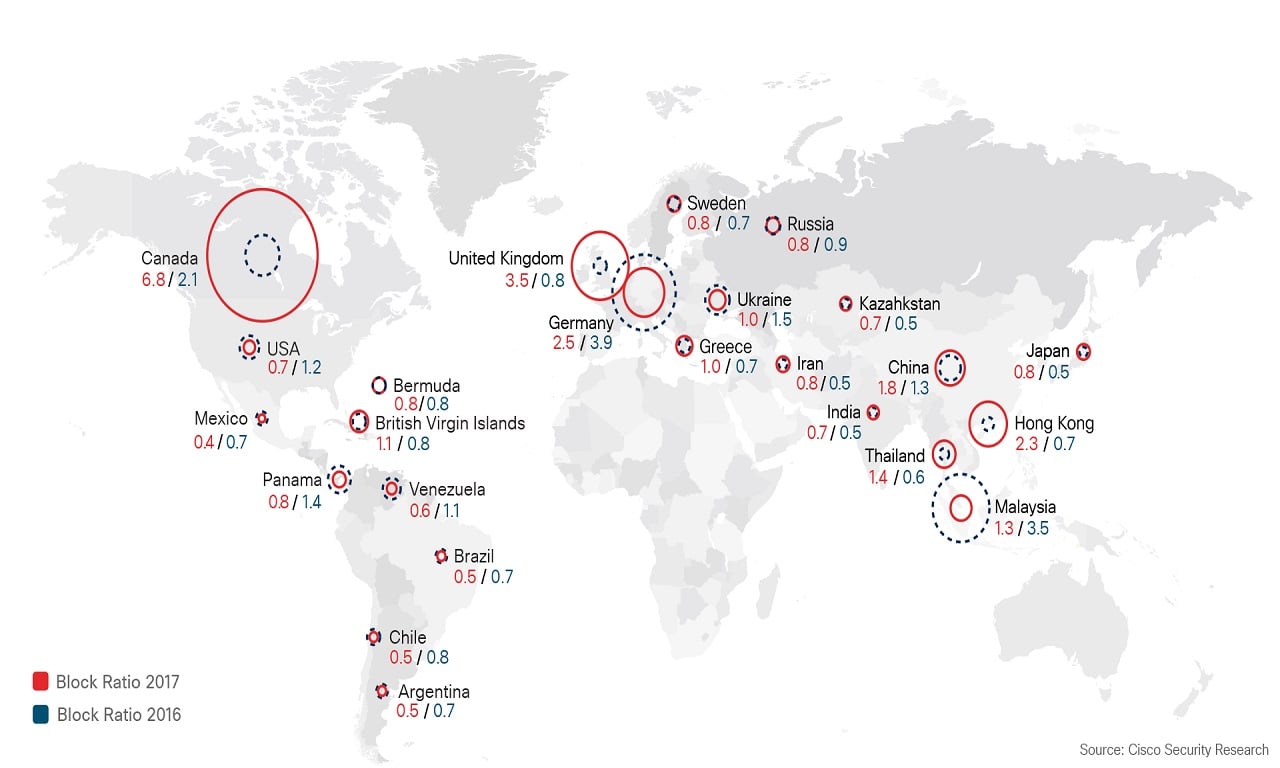The Cisco 2017 Midyear Cybersecurity Report (MCR) uncovers the rapid evolution of threats and the increasing magnitude of attacks, and forecasts potential “destruction of service” (DeOS) attacks. These could eliminate organizations’ backups and safety nets, required to restore systems and data after an attack. Also, with the advent of the Internet of Things (IoT), key industries are bringing more operations online, increasing attack surfaces and the potential scale and impact of these threats.
Recent cyber incidents such as WannaCry and Nyetya show the rapid spread and wide impact of attacks that look like traditional ransomware, but are much more destructive. These events foreshadow what Cisco is calling destruction of service attacks, which can be far more damaging, leaving businesses with no way to recover.
The Internet of Things continues to offer new opportunities for cybercriminals, and its security weaknesses, ripe for exploitation, will play a central role in enabling these campaigns with escalating impact. Recent IoT botnet activity already suggests that some attackers may be laying the foundation for a wide-reaching, high-impact cyber-threat event that could potentially disrupt the Internet itself.
Measuring effectiveness of security practices in the face of these attacks is critical. Cisco tracks progress in reducing “time to detection” (TTD), the window of time between a compromise and the detection of a threat. Faster time to detection is critical to constrain attackers’ operational space and minimize damage from intrusions. Since November 2015, Cisco decreased its median time-to-detection (TTD) from just over 39 hours to about 3.5 hours for the period from November 2016 to May 2017. This figure is based on opt-in telemetry gathered from Cisco security products deployed worldwide.
Threat Landscape: What’s Hot and What’s Not
Cisco security researchers watched the evolution of malware during the first half of 2017 and identified shifts in how adversaries are tailoring their delivery, obfuscation and evasion techniques. Specifically, Cisco saw they increasingly require victims to activate threats by clicking on links or opening files. They are developing fileless malware that lives in memory and is harder to detect or investigate as it is wiped out when a device restarts. Finally adversaries are relying on anonymized and decentralized infrastructure, such as a Tor proxy service, to obscure command and control activities.
While Cisco has seen a striking decline in exploit kits, other traditional attacks are seeing a resurgence:
- Spam volumes are significantly increasing, as adversaries turn to other tried-and-true methods, like email, to distribute malware and generate revenue. Cisco threat researchers anticipate that the volume of spam with malicious attachments will continue to rise while the exploit kit landscape remains in flux.
- Spyware and adware, often dismissed by security professionals as more nuisance than harm, are forms of malware that persist and bring risks to the enterprise. Cisco research sampled 300 companies over a four-month period and found that three prevalent spyware families infected 20 percent of the sample. In a corporate environment, spyware can steal user and company information, weaken the security posture of devices and increase malware infections.
- Evolutions in ransomware, such as the growth of Ransomware-as-a-Service, make it easier for criminals, regardless of skill set, to carry out these attacks. Ransomware has been grabbing headlines and reportedly brought in more than $1 billion in 2016, but this may be misdirecting some organizations, who face an even greater, underreported threat. Business email compromise (BEC), a social engineering attack in which an email is designed to trick organizations into transferring money to attackers, is becoming highly lucrative. Between October 2013 and December 2016, $5.3 billion was stolen via BEC, according to the Internet Crime Complaint Center.
https://www.youtube.com/watch?v=7q34x-H1XsM


